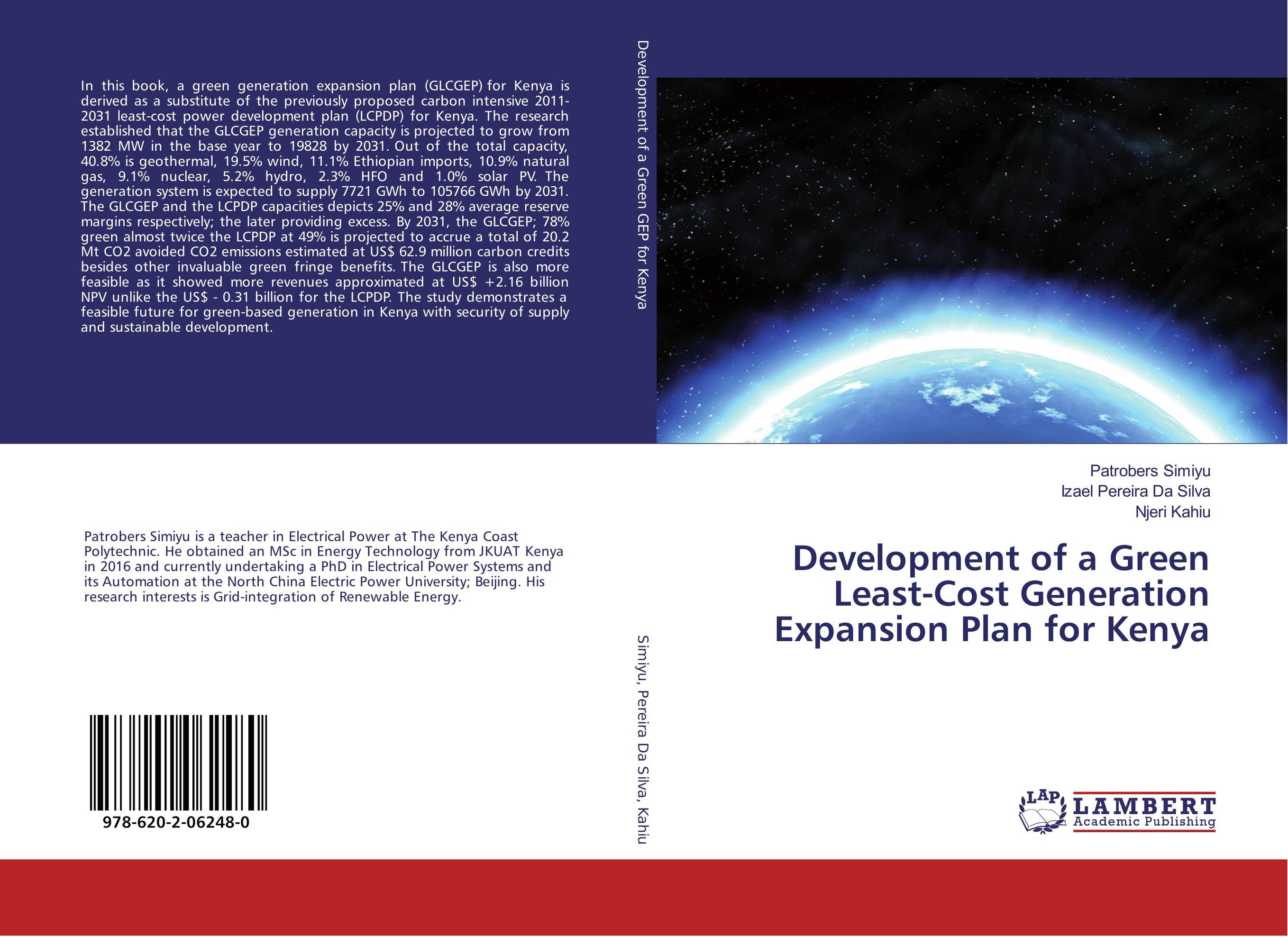| Поиск по каталогу |
|
(строгое соответствие)
|
- Профессиональная
- Научно-популярная
- Художественная
- Публицистика
- Детская
- Искусство
- Хобби, семья, дом
- Спорт
- Путеводители
- Блокноты, тетради, открытки
Development of a Green Least-Cost Generation Expansion Plan for Kenya.

В наличии
| Местонахождение: Алматы | Состояние экземпляра: новый |

Бумажная
версия
версия
Автор: Patrobers Simiyu,Izael Pereira Da Silva and Njeri Kahiu
ISBN: 9786202062480
Год издания: 2018
Формат книги: 60×90/16 (145×215 мм)
Количество страниц: 100
Издательство: LAP LAMBERT Academic Publishing
Цена: 29469 тг
Положить в корзину
| Способы доставки в город Алматы * комплектация (срок до отгрузки) не более 2 рабочих дней |
| Самовывоз из города Алматы (пункты самовывоза партнёра CDEK) |
| Курьерская доставка CDEK из города Москва |
| Доставка Почтой России из города Москва |
Аннотация: In this book, a green generation expansion plan (GLCGEP) for Kenya is derived as a substitute of the previously proposed carbon intensive 2011-2031 least-cost power development plan (LCPDP) for Kenya. The research established that the GLCGEP generation capacity is projected to grow from 1382 MW in the base year to 19828 by 2031. Out of the total capacity, 40.8% is geothermal, 19.5% wind, 11.1% Ethiopian imports, 10.9% natural gas, 9.1% nuclear, 5.2% hydro, 2.3% HFO and 1.0% solar PV. The generation system is expected to supply 7721 GWh to 105766 GWh by 2031. The GLCGEP and the LCPDP capacities depicts 25% and 28% average reserve margins respectively; the later providing excess. By 2031, the GLCGEP; 78% green almost twice the LCPDP at 49% is projected to accrue a total of 20.2 Mt CO2 avoided CO2 emissions estimated at US$ 62.9 million carbon credits besides other invaluable green fringe benefits. The GLCGEP is also more feasible as it showed more revenues approximated at US$ +2.16 billion NPV unlike the US$ - 0.31 billion for the LCPDP. The study demonstrates a feasible future for green-based generation in Kenya with security of supply and sustainable development.
Ключевые слова: Levelized cost of electricity, Renewable Energy Technologies, Generation Expansion Planning, Generation Cost model, Wien Automatic System Planning (WASP) Model IV



